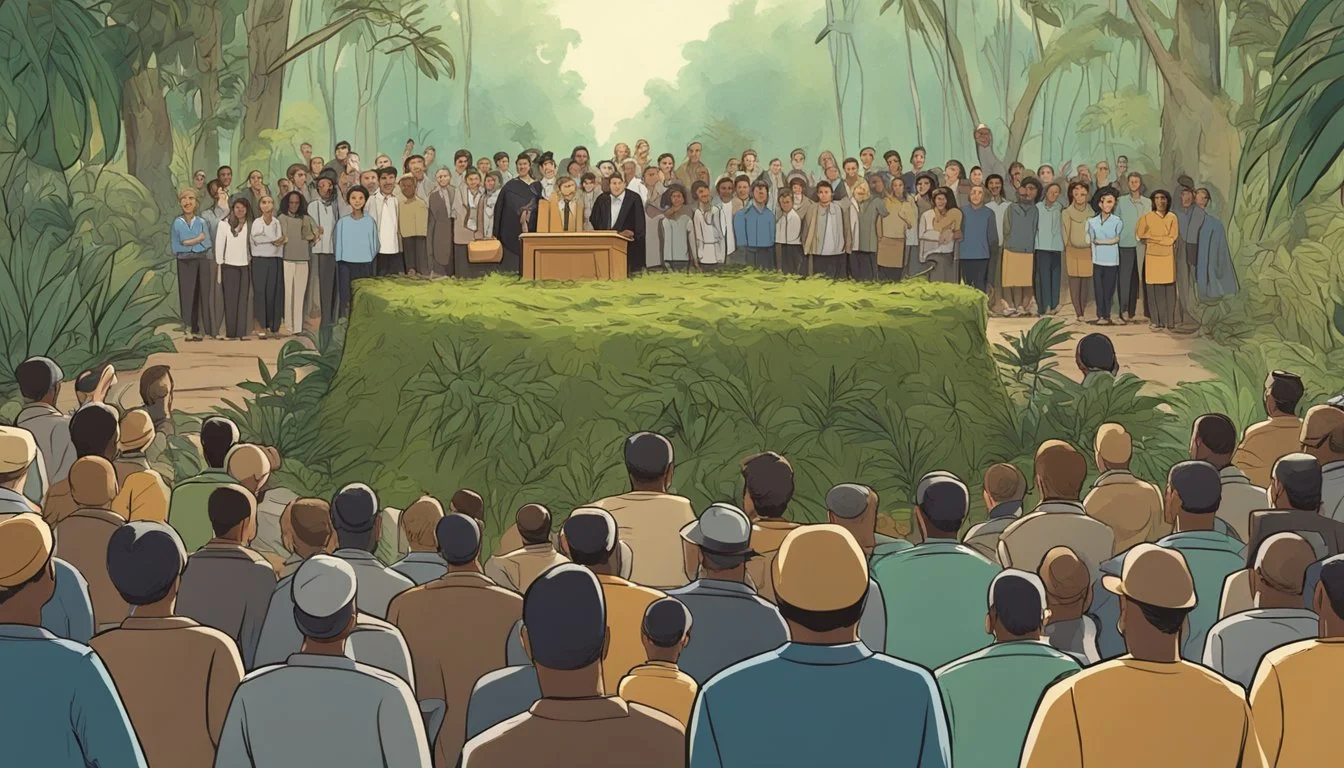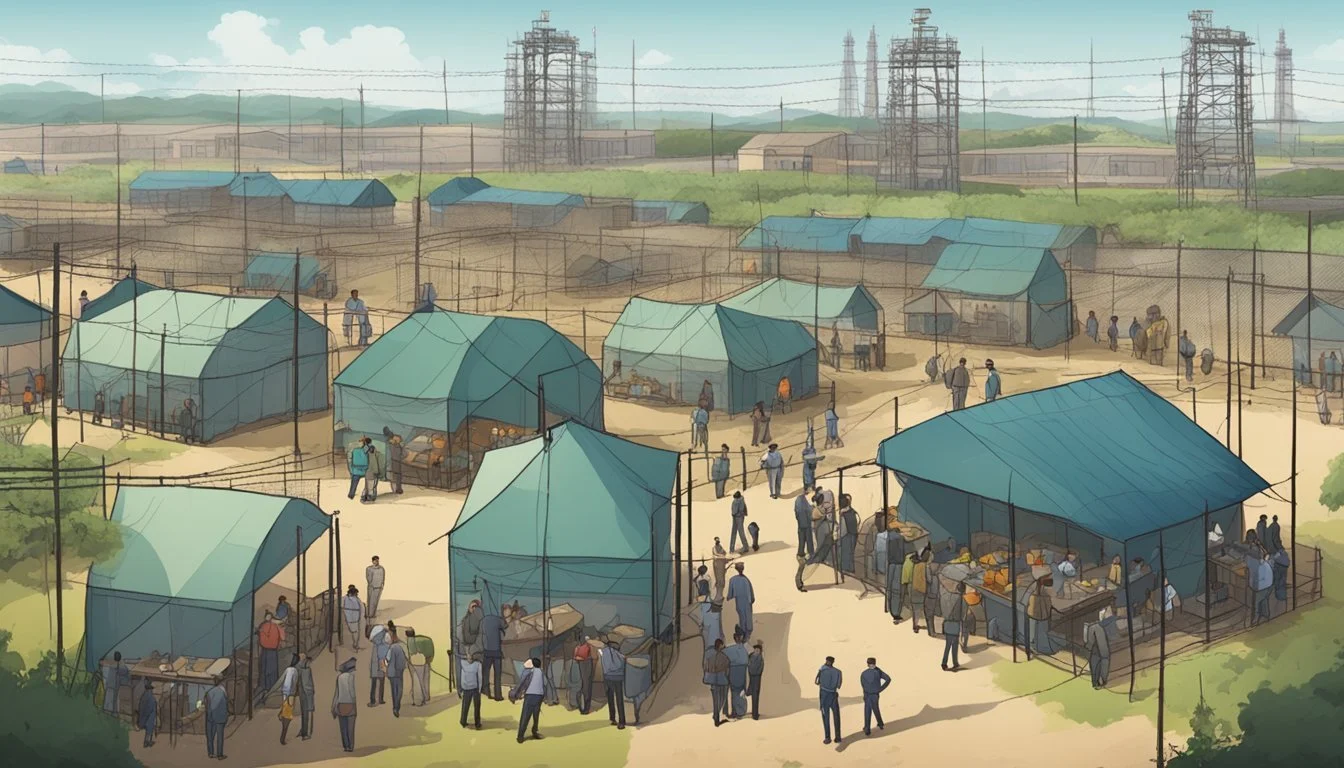Unmasking Evil: Chilling Documentaries on Jim Jones Reveal the Horrors of Cult Manipulation!
Documentaries on Jim Jones provide a chilling glimpse into one of history's most notorious cult leaders. Jim Jones founded the Peoples Temple, a religious organization that tragically ended with a mass murder-suicide in Jonestown, Guyana in 1978. These films offer valuable insights into Jones' rise to power, his manipulative tactics, and the events that led to the deaths of over 900 people.
Several documentaries explore different aspects of the Jonestown tragedy. Some focus on survivor accounts, shedding light on life within the Peoples Temple and the final days in Jonestown. Others examine Jones' background and the social factors that contributed to his influence. These films often include interviews with former members, relatives of victims, and experts on cults and religious movements.
Documentaries about Jim Jones serve as important historical records and cautionary tales. They analyze the psychological manipulation employed by Jones and the societal conditions that allowed his movement to flourish. By presenting a comprehensive look at this dark chapter in history, these films aim to educate viewers and prevent similar tragedies from occurring in the future.
Early Life and Formation of the Peoples Temple
Jim Jones founded the Peoples Temple in the 1950s, promoting racial integration and social justice. The organization grew from humble beginnings in Indiana to become a significant religious and political movement.
Jim Jones' Background
Jim Jones was born in 1931 in Indiana. As a child, he was fascinated by religion and showed early signs of charismatic leadership. Jones studied at Indiana University and Butler University.
He became a student pastor at a Methodist church in Indianapolis. Disturbed by racial segregation, Jones sought to create an integrated congregation. This led him to establish his own church in 1956.
The Ideology of the Peoples Temple
The Peoples Temple advocated for racial equality, social justice, and communal living. Jones preached a blend of Christianity, socialism, and communalism.
He emphasized helping the poor and marginalized. The Temple provided food, housing, and healthcare to its members. Jones promoted a vision of a utopian society free from racism and economic inequality.
His message resonated with many seeking social change in the turbulent 1960s and 1970s.
Growth and Support
The Peoples Temple expanded rapidly in the 1960s. Jones moved the congregation to California in 1965, establishing churches in San Francisco and Los Angeles.
Membership grew to thousands, attracting people from diverse backgrounds. The Temple gained political influence through community outreach and voter mobilization efforts.
Notable supporters included politicians and civil rights leaders. The organization's growth was fueled by Jones' charismatic preaching and promises of a better life for members.
Expansion and Migration to Guyana
Jim Jones and the Peoples Temple moved to Guyana to establish Jonestown, envisioning an isolated utopia free from perceived persecution. The agricultural project aimed to create a self-sustaining community where members could live out their ideals.
The Vision for Jonestown
Jones sold Jonestown as a socialist paradise in the jungle. He promised followers racial equality, communal living, and freedom from American oppression. The remote location in Guyana appealed to Jones's paranoia and desire for control.
Temple members cleared dense rainforest to build housing, medical facilities, and a central pavilion. Jones planned for Jonestown to become a thriving agricultural community of up to 3,000 people. He spoke of expanding further into the Guyanese interior.
Recruitment efforts targeted idealistic youth and minorities. Jones portrayed Jonestown as a chance to create a new society based on equality and social justice.
Life in the Peoples Temple Agricultural Project
Daily life in Jonestown centered on agricultural labor and Temple activities. Residents grew crops, raised livestock, and worked to make the settlement self-sufficient.
The tropical climate and isolation posed significant challenges. Food was often scarce, despite the agricultural focus. Medical issues were common due to poor sanitation and limited supplies.
Jones maintained strict control through exhausting work schedules, sleep deprivation, and punishment for perceived infractions. He held frequent meetings and rallies to reinforce his authority and teachings.
Some members found purpose in building a utopian community. Others grew disillusioned with the harsh conditions and Jones's increasingly erratic behavior.
Inside Jonestown: Daily Life and Control
Jim Jones exerted tight control over Peoples Temple members in Jonestown. The isolated jungle commune operated under strict rules and surveillance, with residents performing assigned roles to sustain the community.
Mechanisms of Control
Jones employed various tactics to maintain control. He required members to attend lengthy meetings and work long hours, leaving little time for rest or reflection. Surveillance was constant, with residents encouraged to report on each other's behavior. Punishments for perceived infractions ranged from public humiliation to physical abuse.
Jones limited outside communication and spread misinformation about dangers beyond Jonestown. He cultivated dependency by controlling access to food, medical care, and other resources. Loyalty tests and staged crises kept members on edge and reinforced Jones' authority as their protector.
Living Conditions and Member Roles
Jonestown living conditions were basic. Residents shared communal housing in small cottages or dormitories. Meals were taken in a central dining area. The tropical climate and poor sanitation led to health issues.
Members worked in assigned roles to support the community. Some tended crops or livestock. Others staffed the medical clinic, school, or nursery. Skilled individuals maintained equipment and infrastructure. A security team patrolled the perimeter.
Daily life centered around work, political education classes, and Temple meetings. Free time was limited. Jones broadcast announcements and speeches throughout the day over a PA system. Despite hardships, some members found purpose in building what they saw as a utopian society.
The Jonestown Massacre: Events Leading to Tragedy
The Jonestown Massacre of November 18, 1978 was the culmination of a series of alarming events. This tragedy resulted in the deaths of over 900 members of the Peoples Temple cult, led by Jim Jones.
The Visit of Congressman Leo Ryan
Congressman Leo Ryan traveled to Jonestown, Guyana to investigate allegations of human rights abuses. He arrived with a delegation of journalists and concerned relatives on November 17, 1978.
Ryan's visit initially appeared positive, with cult members expressing contentment. However, some individuals secretly passed notes to the delegation, requesting help to leave.
As Ryan prepared to depart with defectors, the situation quickly deteriorated. Jones became increasingly agitated, fearing the exposure of his cult's dark reality.
The Massacre and Aftermath
On November 18, Ryan's group was attacked at the Port Kaituma airstrip. The congressman and four others were killed by Peoples Temple members.
Back in Jonestown, Jones initiated a mass murder-suicide. He ordered his followers to drink a cyanide-laced fruit punch.
Over 900 people died, including 304 children. Jones was found dead from a gunshot wound to the head.
The scale of the tragedy shocked the world and exposed the dangers of cult manipulation.
Survivors' Accounts
Several cult members managed to escape the massacre. Their testimonies provide crucial insights into the events leading up to the tragedy.
Survivors describe increasing paranoia and control within the community. Jones conducted frequent "White Nights" - simulations of attacks on the compound.
Many reported feeling trapped, with armed guards patrolling the perimeter. Punishment for disobedience was severe, including beatings and forced drug injections.
These accounts reveal a climate of fear and manipulation that set the stage for the horrific mass death.
Cultural Impact and Legacy
The Jonestown tragedy left an indelible mark on society, shaping public perceptions of cults and influencing media portrayals. It also serves as a stark reminder of the dangers of unchecked charismatic leadership and blind faith.
Impact on Popular Culture
The Jonestown massacre has been referenced extensively in films, television shows, and literature. The phrase "drinking the Kool-Aid" entered popular vernacular as a metaphor for unquestioning belief or loyalty to a cause.
Documentaries about Jonestown continue to captivate audiences, offering new insights into the infamous cult. These films often feature interviews with survivors, providing firsthand accounts of life within the Peoples Temple.
Music and art have also been inspired by the tragedy, with various artists exploring themes of manipulation and mass psychology in their work.
Lessons and Warnings from History
The Jonestown incident prompted increased scrutiny of new religious movements and raised awareness about the potential dangers of charismatic leaders. It led to discussions about the importance of critical thinking and the need for individuals to question authority.
Mental health professionals studied the psychological factors that led to such widespread compliance with Jim Jones' directives. This research has contributed to a better understanding of group dynamics and manipulation tactics.
The tragedy also highlighted the need for improved oversight of religious organizations and prompted discussions about the balance between religious freedom and public safety.
Survivors' testimonies in documentaries serve as powerful warnings against the allure of utopian promises and the importance of maintaining individual autonomy within communities.
Documentary Narratives and Approaches
Documentaries on Jim Jones have employed various storytelling techniques to explore the complex events surrounding Peoples Temple and Jonestown. These films utilize archival footage, survivor interviews, and expert analysis to construct compelling narratives.
Documentary Style and Structure
Many Jim Jones documentaries adopt a chronological approach, tracing the rise and fall of Peoples Temple. They often begin with Jones's early life and ministry, progressing through the group's move to California and eventual relocation to Guyana. Filmmakers use a mix of archival materials, including photos, audio recordings, and video footage to bring the story to life. Survivor testimonies feature prominently, providing firsthand accounts of life within the group.
Some documentaries, like "Jonestown: Terror in the Jungle," employ episodic structures to delve deeper into specific aspects of the story. This format allows for more detailed exploration of key events and personalities.
Historical Context in Documentaries
Documentaries on Jim Jones typically situate the Peoples Temple within the broader social and political landscape of the 1960s and 1970s. They explore how Jones's message of racial equality and social justice resonated during the Civil Rights era. Films often highlight the group's involvement in San Francisco politics and its relationships with prominent figures.
The Cold War context is frequently addressed, explaining how fears of nuclear war influenced Jones's decision to establish a "socialist paradise" in Guyana. Documentaries also examine the cultural climate that allowed alternative religious movements to flourish during this period.
Analyzing the Narrative
Many documentaries challenge simplistic portrayals of Jonestown as merely a mass suicide. They explore the concept of "revolutionary suicide" promoted by Jones and examine the complex factors that led to the tragedy. Films often present multiple perspectives, including those of former members, relatives of the deceased, and investigators.
Documentaries analyze Jones's leadership style, his use of manipulation tactics, and the gradual erosion of individual autonomy within the group. They often include expert commentary from psychologists, sociologists, and cult researchers to provide insight into the group dynamics at play.
Some films incorporate dramatic reenactments to visualize key events or illustrate survivor accounts. This technique can add emotional impact but is sometimes criticized for potentially blurring the line between fact and dramatization.





